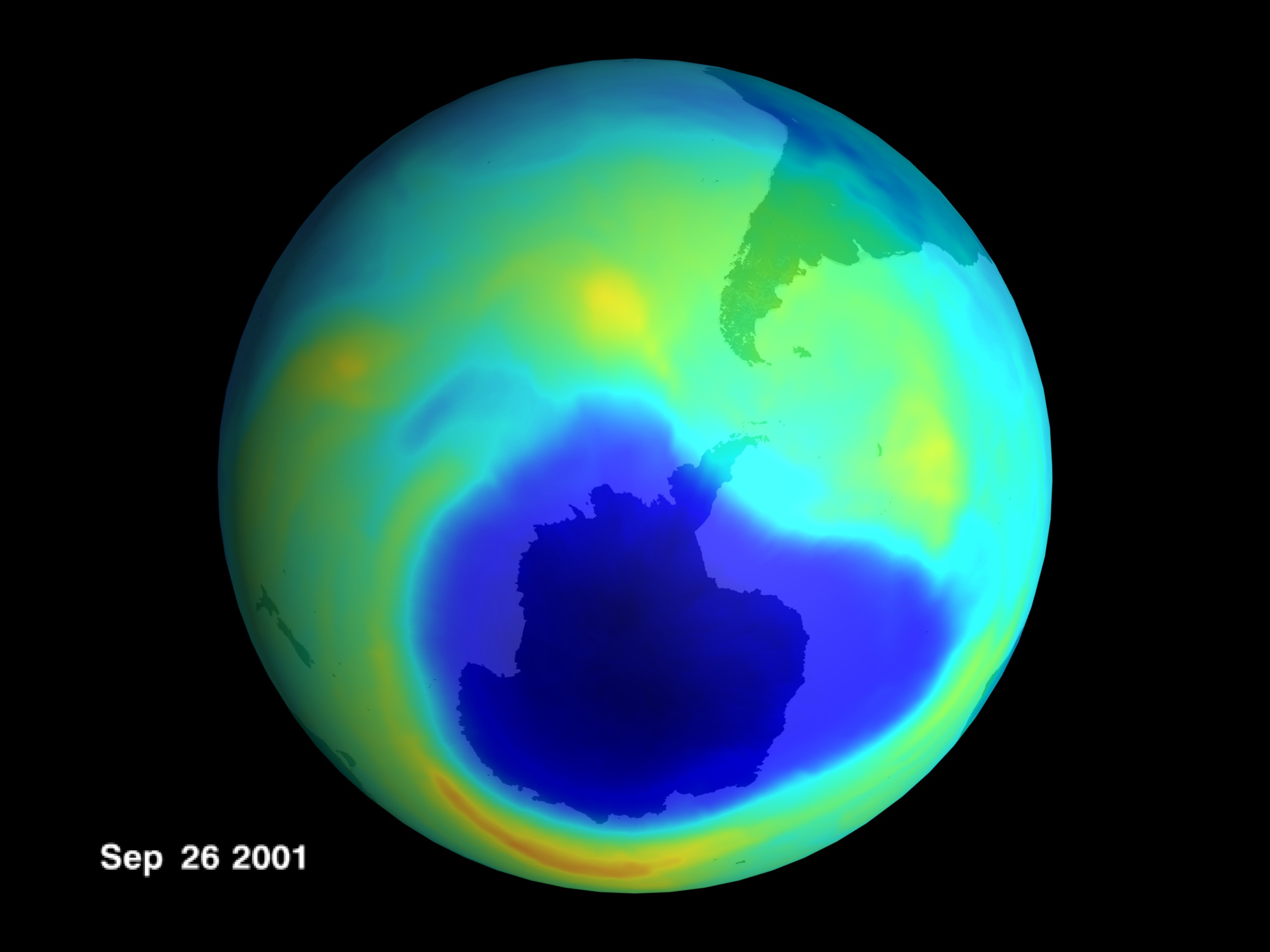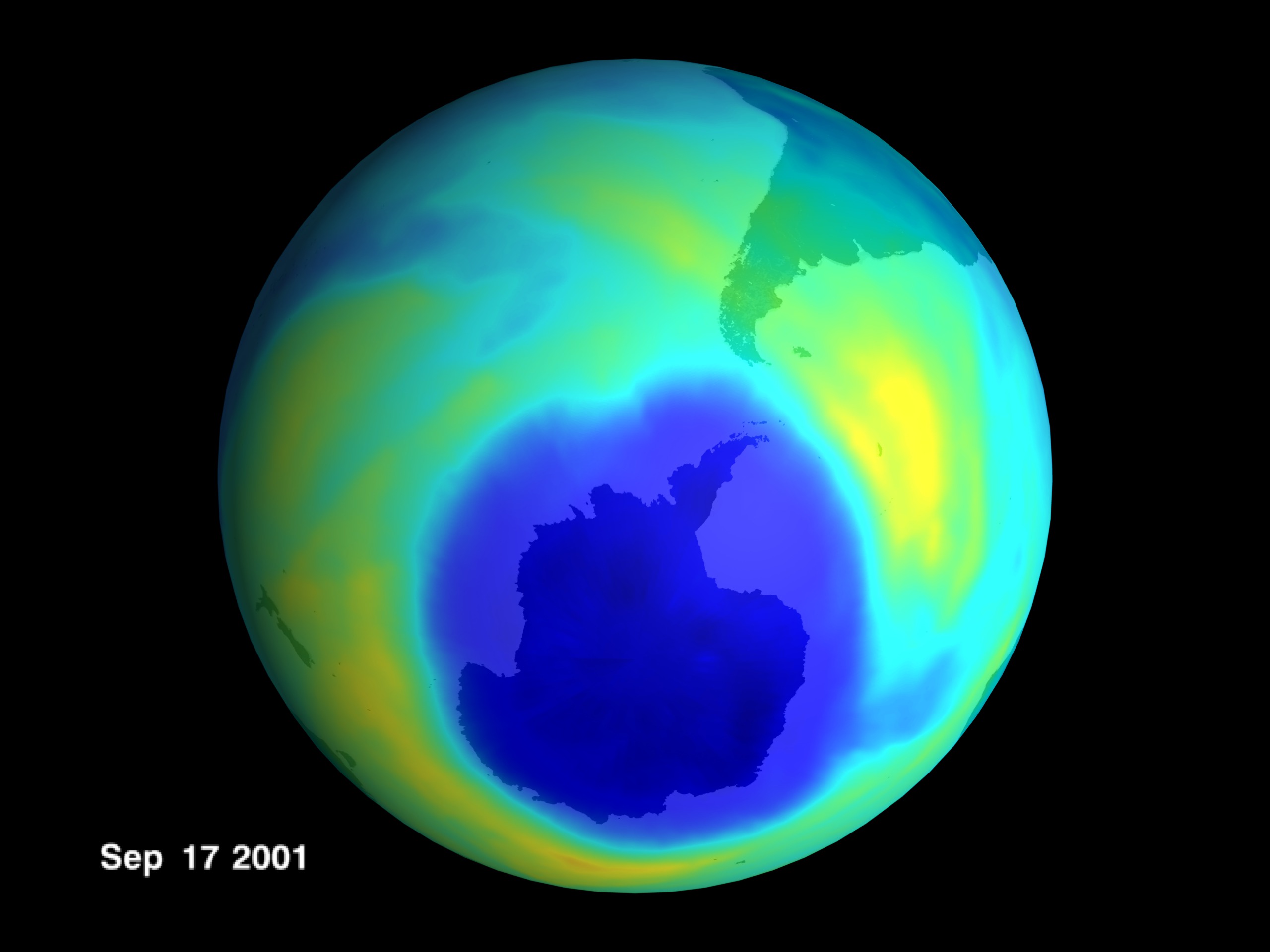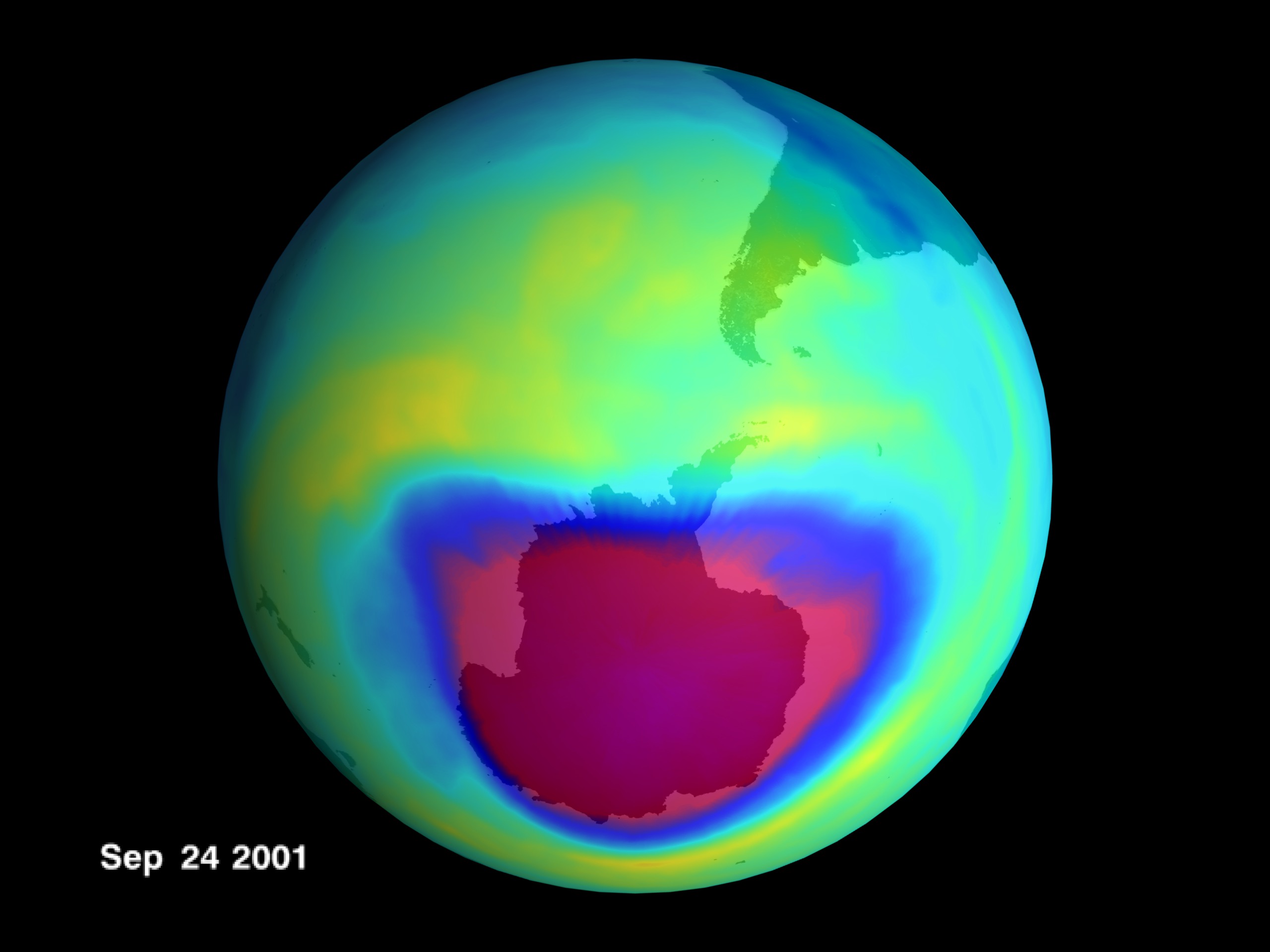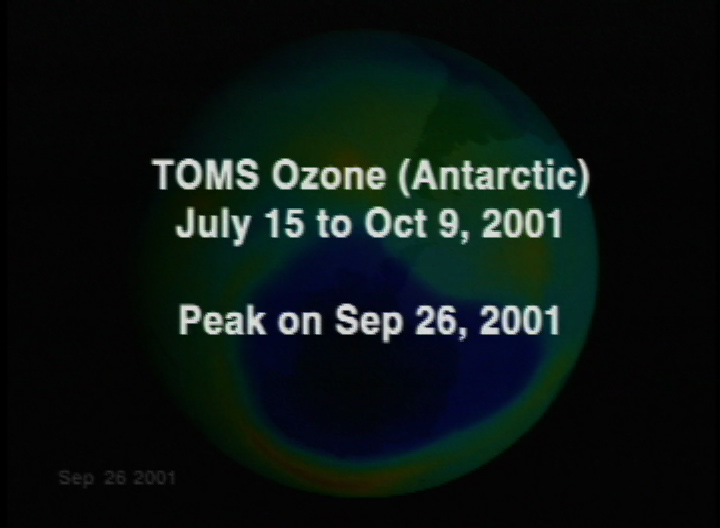Earth
ID: 2275
Satellite data show the area of this year's Antarctic ozone hole peaked at about 26 million square kilometers — roughly the size of North America — making the hole similar in size to those of the past three years, according to scientists from NASA and the National Oceanic and Atmospheric Administration (NOAA). Researchers have observed a leveling-off of the hole size and predict a slow recovery.




Antarctic Ozone from TOMS: July 15, 2001 to October 9, 2001




Visualization Credits
Please give credit for this item to:
NASA/Goddard Space Flight Center Scientific Visualization Studio
NASA/Goddard Space Flight Center Scientific Visualization Studio
Short URL to share this page:
https://svs.gsfc.nasa.gov/2275
Data Used:
Note: While we identify the data sets used in these visualizations, we do not store any further details nor the data sets themselves on our site.
Dates of Data Used:
2001/07/15-2001/10/09
This item is part of this series:
Stratospheric Ozone
Keywords:
DLESE >> Atmospheric science
SVS >> Dobson Units
GCMD >> Earth Science >> Atmosphere >> Atmospheric Chemistry/Oxygen Compounds >> Ozone
GCMD >> Location >> Stratosphere
NASA Science >> Earth
GCMD keywords can be found on the Internet with the following citation: Olsen, L.M., G. Major, K. Shein, J. Scialdone, S. Ritz, T. Stevens, M. Morahan, A. Aleman, R. Vogel, S. Leicester, H. Weir, M. Meaux, S. Grebas, C.Solomon, M. Holland, T. Northcutt, R. A. Restrepo, R. Bilodeau, 2013. NASA/Global Change Master Directory (GCMD) Earth Science Keywords. Version 8.0.0.0.0
https://svs.gsfc.nasa.gov/2275
Data Used:
Earth Probe/TOMS/Total Ozone
2001/07/15-2001/10/09Dates of Data Used:
2001/07/15-2001/10/09
This item is part of this series:
Stratospheric Ozone
Keywords:
DLESE >> Atmospheric science
SVS >> Dobson Units
GCMD >> Earth Science >> Atmosphere >> Atmospheric Chemistry/Oxygen Compounds >> Ozone
GCMD >> Location >> Stratosphere
NASA Science >> Earth
GCMD keywords can be found on the Internet with the following citation: Olsen, L.M., G. Major, K. Shein, J. Scialdone, S. Ritz, T. Stevens, M. Morahan, A. Aleman, R. Vogel, S. Leicester, H. Weir, M. Meaux, S. Grebas, C.Solomon, M. Holland, T. Northcutt, R. A. Restrepo, R. Bilodeau, 2013. NASA/Global Change Master Directory (GCMD) Earth Science Keywords. Version 8.0.0.0.0











